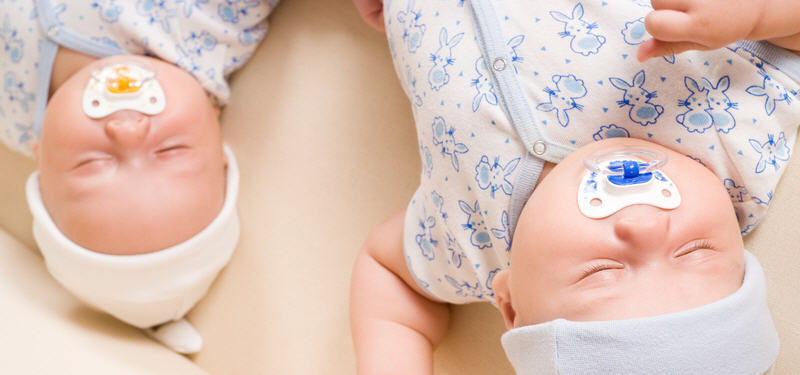
For anyone having a child, one of the scariest terms you frequently hear being talked about is Sudden Infant Death Syndrome (also referred to as “crib death”). And while there is plenty to be worried about, fortunately, there is also reason for optimism. Not only have we provided facts about SIDS, but we’ll also give you tips on how to reduce the risk of the condition, while giving you some baby sleep tips at the end.
So, what is Sudden Infant Death Syndrome (SIDS)? It seems easy to say that the term is self-explanatory, but really there is still an insufficient knowledge of what actually causes SIDS. But what is known is that it is diagnosed to those otherwise healthy infants that have suddenly and inexplicably died and whose death remains a mystery even post-autopsy. Luckily it remains such a hot topic that growing awareness has steadily reduced the amount of casualties significantly over the years thanks to parents, physicians and community awareness groups.
You may have also heard the term Sudden Unexpected Infant Death (SUID), which can be best described as an all-encompassing term to include other unexpected deaths, sudden natural deaths and even homicides.
The Safe To Sleep Campaign is a public education movement that was started in 1994 in an effort to educate parents and caregivers on the dangers of SIDS, with a goal of reducing the overall risk of incidents of this and other sleep-related causes of infant mortality. Since they have started the campaign, in the United States there has been a 50% decrease in the amount of overall cases of SIDS.
FACTS ABOUT SIDS
1. According to the Safe To Sleep Campaign, SIDS is the number one cause of infant-related deaths for those between the ages of 1 and 12 months of age. In fact, 90% of SIDS deaths occur before a baby reaches 6 months of age.
2. In the United States, approximately 2 out of every 1000 infants succumb to this unexplained condition.
3. Babies born to women who smoked during pregnancy die from SIDS three times more often than babies born to non-smokers.
4. Each year in the U.S., there are about 3,500 Sudden Unexpected Infant Deaths (SUIDs). Almost half of those are attributed to SIDS.
5. Between 1990 and 2013, the SIDS rate has declined considerably from 130.3 deaths per 100,000 to just 39.7 deaths.
6. [Study] Infants who are breastfed exclusively cut the risk of SIDs by 73%.
7. [Study] In a study between 2008 and 2012, mortality rates were highest amongst American Indian (213.3) and African American (180.9) races, while Hispanic (53.8) and Asian (36.5) races represented the lowest rates.
8. [Study] Bed Sharing is associated with a 5 times increase in the risk of SIDS.
CO-SLEEPING, BED SHARING AND SIDS
Sleeping an infant with another child or in your bed is not recommended. Actually, studies have shown that the risk of Sudden Infant Death Syndrome is reduced by up to 50% when a baby sleeps in the same room as her parents, in contrast to babies sleeping in separate bedrooms. In fact, you should sleep in the same room with your child for up to 12 months to lower the risk of her passing from SIDS.
…the risk of Sudden Infant Death Syndrome is reduced by up to 50% when a baby sleeps in the same room as her parents.

Bed sharing is not recommended.
Bed sharing, of course, is a much debated topic as it is thought to also provide certain benefits such as increased breastfeeding rates, better parent-child bonding and less sleep problems. However, recent statistics still suggest otherwise.
POSSIBLE CAUSES OF SUDDEN INFANT DEATH SYNDROME
There is no absolute method of determining if your baby will be at a higher risk for SIDS, but there have been many studies that have looked to find correlations between certain factors that may have played a role in sudden baby deaths. Many hypotheses have been created based on those instances and several of those potential causes have been listed below for reference.
- Not breastfeeding your baby may lead to a higher incidence of SIDS
- Certain defects in breathing that may have effected babies in their sleep
- Infant botulism (very rare), as well as some other bacterial infections
- Reactions to certain immunizations
- Reaction to cow’s milk
- Social circumstances such as lower economic status and crowded households
- Little or no prenatal Health Care
- Smoking while pregnant, or even in the area of your baby
- Inexplicable higher rate during winter months
- Possible link between Volatile Organic Compounds (VOCs) in crib mattresses and SIDS
HOW TO REDUCE THE RISK OF SIDS
So now that you know the facts and dangers associated with sudden infant death syndrome, you can better understand how to reduce the risk of SIDS. It of course stands to reason that if one thing is linked to causing SIDS, that not doing those things should reduce the risk of SIDS. With that said, here are several commonly shared precautions, including some sleep tips to be aware of.
- Make sure you get the best prenatal care you can.
- Obviously you shouldn’t allow smoke to be around your baby.
- Always put your baby to sleep on her back.
- Choose a firm crib mattress that does not give in easily when you push down.
- Make sure to follow crib safety guidelines including buying a firm mattress and using sheets and crib pads that fit snug around the mattress.
- Don’t use thick quilts and always make sure the infant’s head and face remain uncovered. Also, do not use pillows or extra blankets in the crib.
- Remove bumper pads, toys and other extraneous items from the crib.
- Never put your baby to sleep on a couch or armchair with you.
- Car seats are not meant for young babies to sleep in. It also may not be well for a developing baby’s spine.
CONCLUSION
Now that you know the facts about SIDS and the dangers that are present, you should be well informed of steps you need to take to prevent yourself from being on the wrong side of an ugly statistic. It’s still an unknown condition, so you really do need to be proactive to give your baby the best chance to grow up healthy and happy. Please do the best for your baby and follow all precautions, buy the right gear and have fun with your special little person. Safely.
